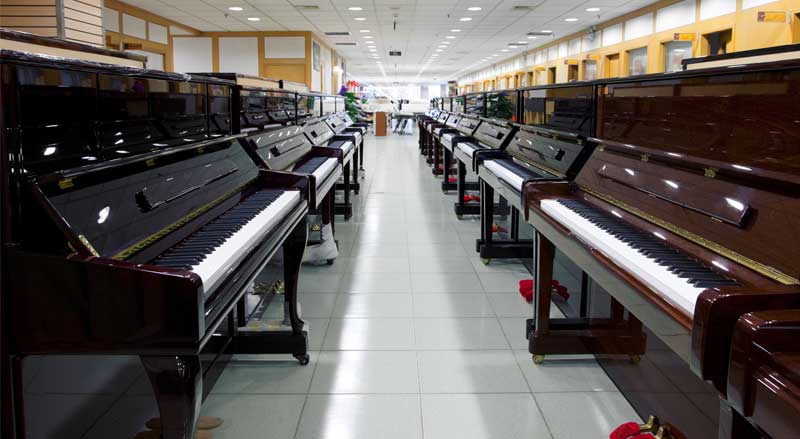
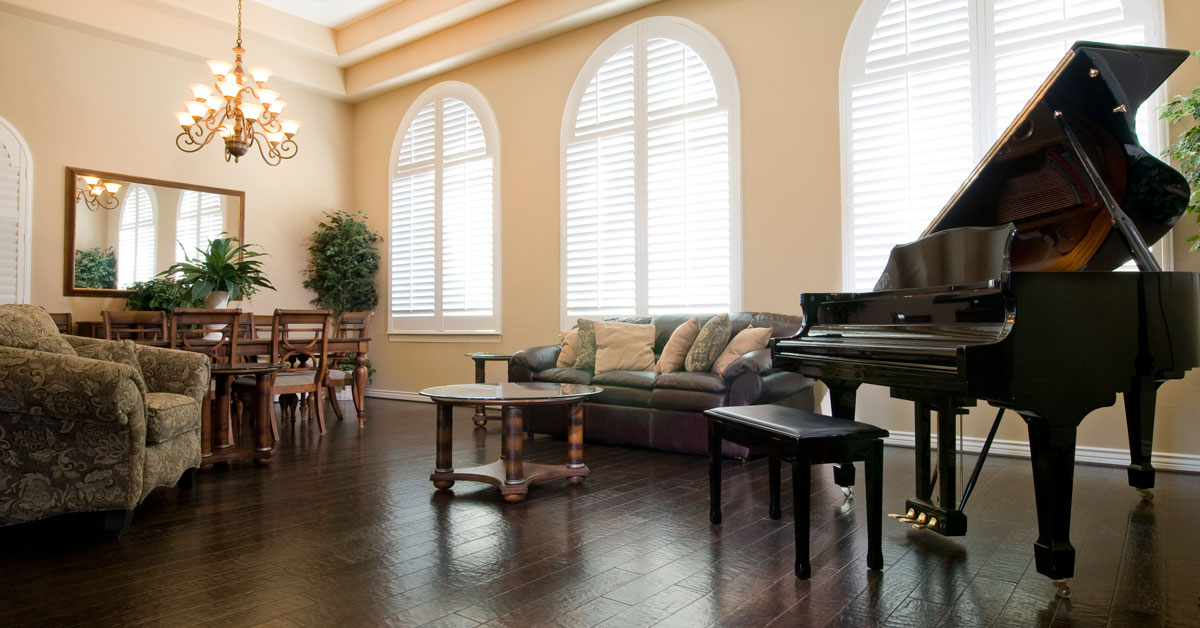
So, you finally decided to buy a piano. Whether you’re a new student of the piano or have been practicing for years, it can be hard to decide what type of piano is best suited for your needs and lifestyle. How important is sound quality to you? Where will you place the piano in your home? How much space do you have? How much will you have to spend to get a good piano? What’s the best piano for you and my family? These are some questions you should ask yourself when choosing your piano.
We all act on impulse, its only human! However, when that impulse is to learn a new instrument, deciding to learn the piano isn’t a decision to be taken lightly. You shouldn’t just walk into the store, purchase the first piano that looks appealing to you and leave. Choosing the best piano may take a lot of information gathering before you can make a decision. If you need the extra push to purchase a piano, consider this: learning to play the piano or any musical instrument helps with self-expression, confidence building, creative problem solving and improving concentration, focus, hand-eye coordination, memory and reading ability.
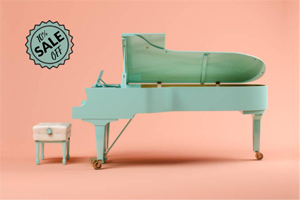
Piano models vary greatly in price. Finding a price range that you are comfortable with is an important aspect of purchasing a piano. The good news for those who are committed to learning is that prices have never been lower. In the past, only the very affluent could afford to purchase a piano. In 1950 a new Baldwin vertical piano sold for 5-6 times the average household monthly income and a grand piano for 12 times the average monthly income. Now, you walk into a store and spend as little as $500 to $900 for a good used piano. That’s a drop in the bucket compared to what they used to sell for!
When you’re buying a piano it’s understandable that you might fall in love with a beautiful Steinway Grand Piano, but let’s consider the space you have! A piano that fits well in your home is an important part of remaining happy with your purchase. If your piano takes up too much room, you might get tired of it always being in your way. If the piano you choose is smaller than it needs to be, you might not get the richness in sound you desire. Map out the space for your piano by placing tape on your floor. Outline its exact measurements and live for a few days without using the space. This will help you envision what having a piano will be like.
Whether you want an acoustic piano or a digital keyboard, there are plenty of varieties to choose from. Factor into your decision your level of commitment, price range, and amount of space to find which type of piano will fit your lifestyle.
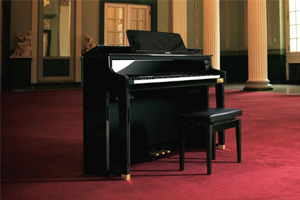
Most vertical pianos are five feet wide, two feet deep, and can stand between 37 to 57 inches in height. A vertical piano, just like all pianos, depends on its size for sound quality. A bigger piano allows for a bigger soundboard and longer strings, creating a deeper and richer sound.
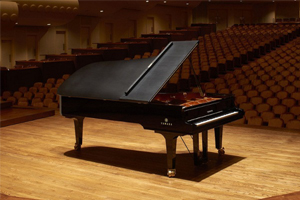
If you think a grand piano is more your style, then you need to have at least a five-foot square area for a baby grand. All grand pianos are just about five feet wide, the space it takes to fit 88 keys in a row. The length of grand pianos is what varies the most and should be considered for your space. While a baby grand can be four feet seven inches in length, a full concert grand can reach up to nine feet from the front of the keys to the furthest point in the back, or “tail” of the piano. Your average home will have a grand piano that is five to six feet in length. When we said height matters for a vertical piano, it is the length of a grand piano that equates to better sound.
Don’t worry about getting a grand piano through the front door, it won’t be a problem. All grand pianos are transported and delivered to you on their side, with the legs and lyre removed. So, every front door has more than ample room for the delivery. In fact, if your perfect location for a grand piano is on the 2nd floor or down a flight of stairs to the lower level, in most cases this will still not be a problem in delivering the instrument. Most piano movers charge a small additional fee to move a piano up or down a flight of stairs.
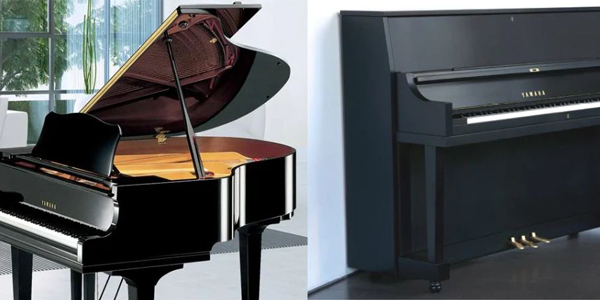
If you have decided on an acoustic piano, now comes the big question a lot of people have – is there really a difference between an upright piano and a grand piano? While we can write a full book on this question, we’ll answer it as quickly as we can for you.
In short, yes, there is a difference in the “action” of a grand piano and an upright piano. The action of a piano is the movement throughout the mechanical components from when your finger touches the key to when the hammer lifts and strikes the string. In a grand piano, the strings and hammers are facing downwards which allows for the quickest and smoothest action a piano can offer because it uses gravity as an influencing factor. This also allows for quicker repetition of keys as a grand piano key only has to return to 1/3 of its original position. We aren’t saying that upright pianos can’t have amazing action or sound quality. In fact, there are amazing upright pianos that offer great sound, musicality and outstanding responsive piano actions.
A keyboard or digital piano tends to be better for someone who is limited on space and may be looking for more utility in their instrument. While digital pianos don’t have the same sound quality of an acoustic upright or grand piano, they have become a great alternative to the traditional piano. Digital pianos offer several advantages:
1. The never need to be tuned.
2. You can wear headphones to reduce the volume or play the piano in private.
3. Digital pianos can be easily amplified if you need more volume.
4. Most models have a transpose feature, so you can change keys with the touch of a button.
5. Many digital pianos offer a multitude of sounds, a built-in metronome and recording features.
6. Some digital pianos offer rhythms and accompaniment features.
7. Digital pianos and keyboards can be connected to your personal computer via MIDI or Musical Instrument Digital Interface. This helps composers and musicians use the instrument as a professional recording workstation that can even print the music you play.
1. Nothing replicates the sound of an acoustic piano. The tone, resonance, sustain and musical quality of a grand or vertical piano cannot be replicated perfectly by a digital piano.
2. The musical attributes of an acoustic piano, such as musical dynamics, touch and feel of a grand or vertical piano is still the gold-standard of the piano world.
3. The beauty of appearance; most digital pianos are not traditional, elegant pieces of furniture.
4. Obsolescence. Because technology is moving at a rapid pace, it is almost certain “next year’s model” will have some improvements.
5. Value. Historically, just over a period of several years, digital pianos have lost a very significant percentage of their market value. Acoustic pianos hold their value surprisingly well. For example, high quality instruments made my Steinway, Baldwin, Knabe, Mason & Hamlin, Bechstein, Bösendorfer, August Förster, Schulze-Pollmann and others usually retain a great percentage of their original value even after 30, 40 or 50 years!
When picking out a piano you need to choose with more information than just the look, price, and brand. You should select a piano that sounds good and feels great while playing it. We suggest, when going into the store, that you test multiple kinds of pianos to really get the feel for the instrument you are buying. Be sure that the timbre and tone fits your personal taste.
When choosing a piano, it is important to note the resistance and responsiveness of the piano’s action. Meaning, how hard or easy it is to press down on the keys and how responsive the action is to your touch.
Furthermore, it is good to check how much dynamic range the piano has. When you’re pressing the key softly is there a noticeable difference from when you press harder? If not, you may want to look at another piano because dynamic range of volume is important for optimal musical experience.
To help you with your decision, a 100% trade in program can be sought out to help you purchase that more expensive piano down the line. At B Natural Pianos and PianoCloseouts.com, we offer a full trade-in value on most acoustic pianos we sell. So, you can begin with a modest investment and as you progress, your first piano can be traded-in on another piano and you won’t lose any money on the first purchase.
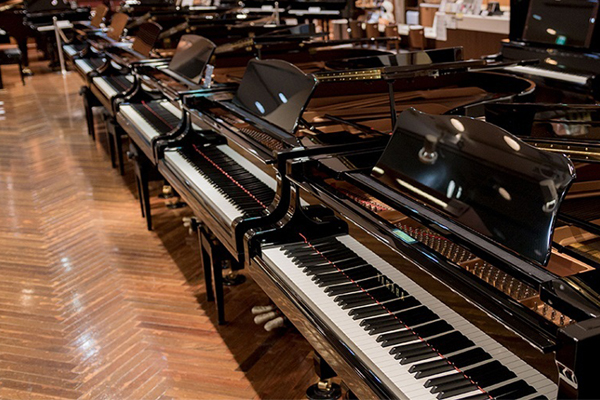
In conclusion, when you’re in the store put some serious thought into your decision. Purchase according to budget, skill, dedication, size and most importantly know exactly what quality you’re buying. Make sure you are purchasing an instrument with a guarantee from a reputable piano dealer who has great reviews and many years of experience.
Also read this- You are Never Too Busy (or Old) to Learn an Instrument


